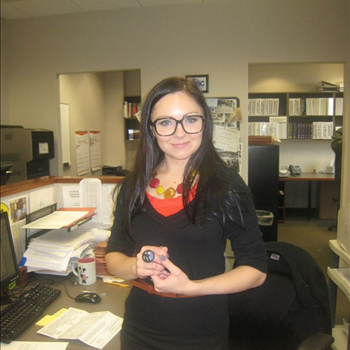Right Now
5 Interesting Facts about Varicose Veins
Veins make half of the human blood system. Every day, they pump up blood to the heart, where it gets enriched with oxygen and flows back to the organs. However, this system does not always work without failures.
Hundreds of millions of people suffer from vein pathologies. Their number is growing every year. Varicose veins are especially widespread - according to scientists, this disease affects more than 20% of the adult population of the planet.
These facts about varicose veins will help you learn something new about the symptoms and causes of this pathology and also methods of varicose vein treatment.
1. Women suffer from varicose veins almost three times more often than men
However, it is men who turn to doctors with the most severe forms of altered veins.
Women are affected by many risk factors for varicose veins, including pregnancy and hormonal imbalances. Therefore, they are more likely to develop thick swollen veins.
Severe cases of varicose veins in men are also easily explained. On average, women notice altered vessels faster and are more likely to turn to a phlebologist. Men rarely diagnose the disease in a timely manner. They often get used to heaviness in the legs, itching and cramps, but do not go to the doctor before the appearance of thick dilated veins.
2. Proneness to varicose veins can be hereditary
There are cases when the pathology shows up only after a generation - problems with the veins may not develop in the daughter, but appear in the granddaughter.
Sick veins in parents are not a sentence. Hereditary factors do increase the risk of vascular changes, but this alone does not guarantee the appearance of varicose veins. If a person is at risk and is constantly engaged in the prevention of vascular disease, they can keep the veins healthy for many years.
Therefore, early diagnosis is very important. At the first signs of varicose veins, you should contact a phlebologist and talk about preventive measures. Timely action will prevent irreversible changes in the veins.
3. In the Middle Ages, varicose veins were treated with dangerous methods
The veins were cut out, bandaged, and left to bleed. Sometimes even modern people imagine vascular surgery as very painful and dangerous. By the standards of our time, medieval procedures were indeed very dangerous and often resulted in the death of patients. Doctors didn't have the necessary medical knowledge but these failed attempts have spurred the development of more effective therapies.
However, today altered vessels can be eliminated without long hospitalization and scars. Less traumatic procedures do not leave marks on the skin.
4. To slow down the development of varicose veins, doctors started to use compression stockings
Since the 17th century, therapies have improved. However, elastic knitwear is still used both for prevention and during the treatment of altered veins.
Compression knit wraps your legs. Thanks to this, the vessels do not expand too much, and the swelling decreases. For the first time, doctors began to bandage feet back in ancient Egypt and Rome. Gradually, these methods improved. After the appearance of stockings, they found the use for them for medical purposes.
Several types of knitwear are now used, depending on the severity of the symptoms. Therefore, it usually cannot be used without a prescription. Only preventive products are suitable for wearing without consulting a doctor.
Elastic underwear is indispensable in the prevention of varicose veins and also helps patients recover faster after vein surgery.
5. Hemorrhoids are one of the manifestations of varicose veins
In this case, the vessels of the rectum change so the process and symptoms are not visible.
This pathology is very common - nearly three-quarters of adults suffer from hemorrhoids from time to time. It develops for several reasons:
Obesity;
Pregnancy;
Weight lifting;
Chronic constipation or diarrhea;
Anal sex.
With age, the risk of hemorrhoids increases. The tissues that support the intestinal veins weaken. Therefore, the vessels in this part of the body are more likely to stretch.
Lifestyle changes often help reduce the symptoms of pathology and alleviate the patient's condition. A healthy diet and physical activity may be enough to relieve pain, swelling, and inflammation, but it will take time for you to feel the changes.
Surgical intervention against hemorrhoids is required only in the rarest cases - when less traumatic procedures are ineffective.
More Posts



















Map
Amelia Grant
Get DirectionsAmelia Grant
-
31-57 37th St
Long Island City, New York 11103
United States - 6462709836
Report This Post
Please complete the following requested information to flag this post and report abuse, or offensive content. Your report will be reviewed within 24 hours. We will take appropriate action as described in Findit terms of use.



